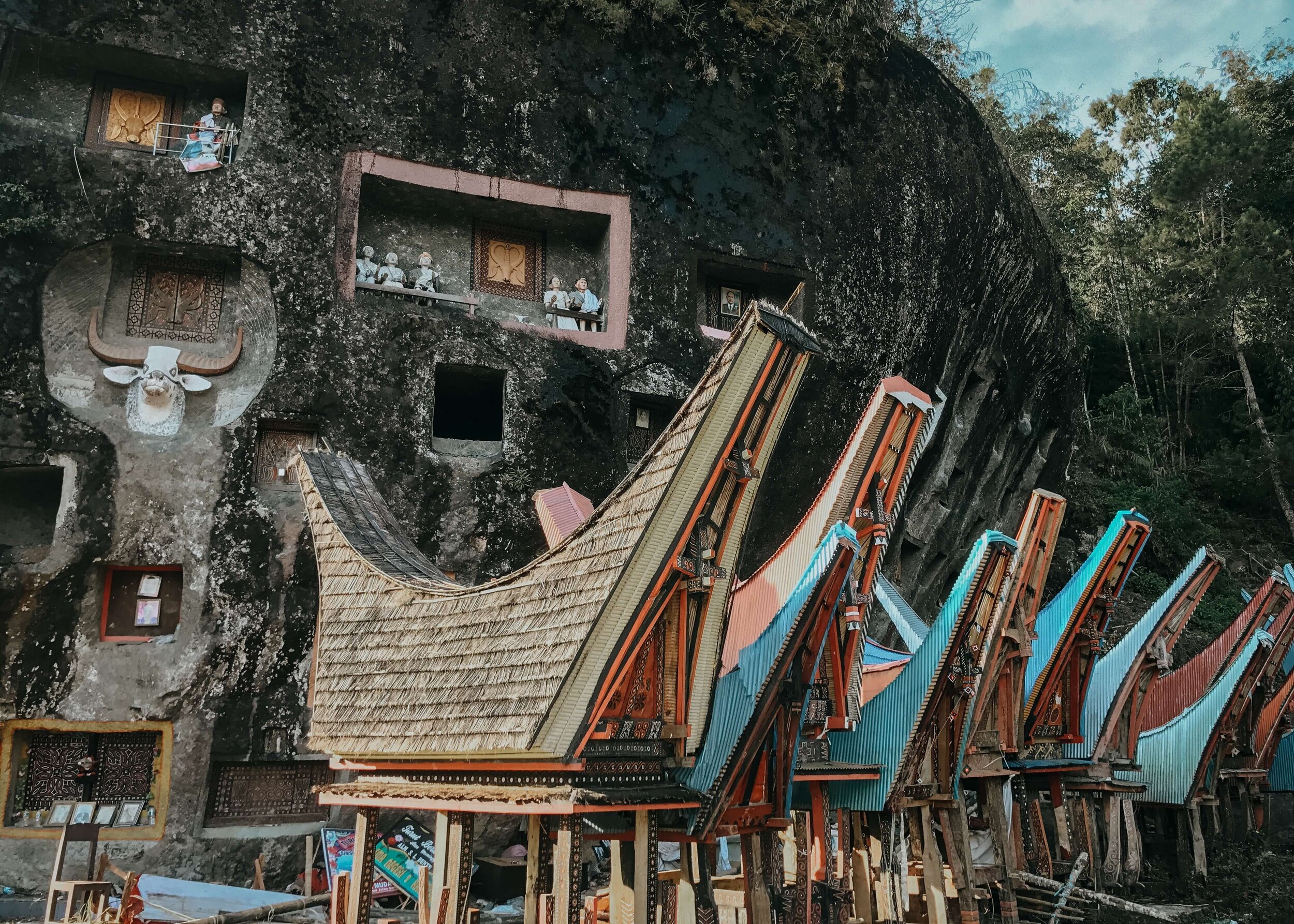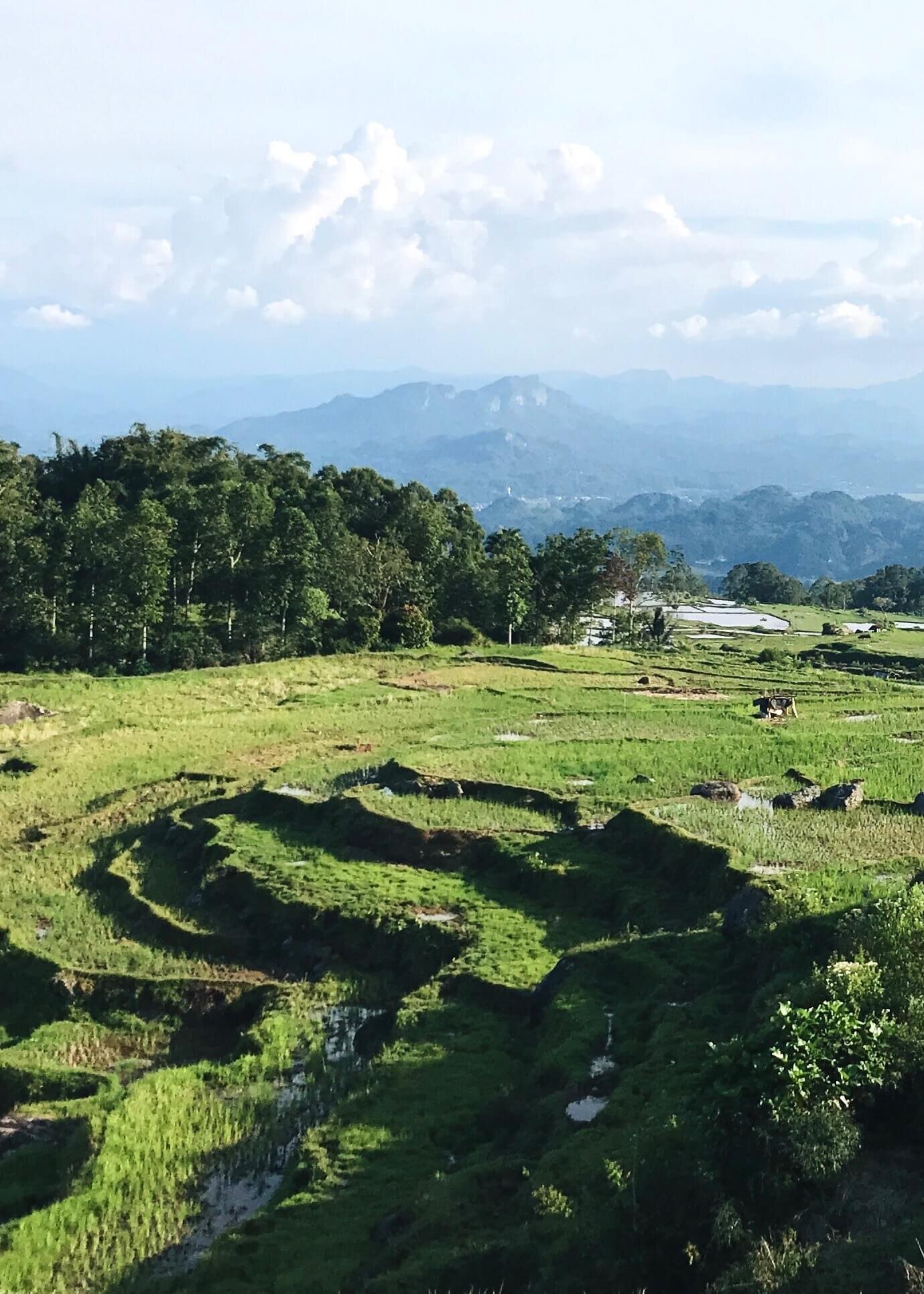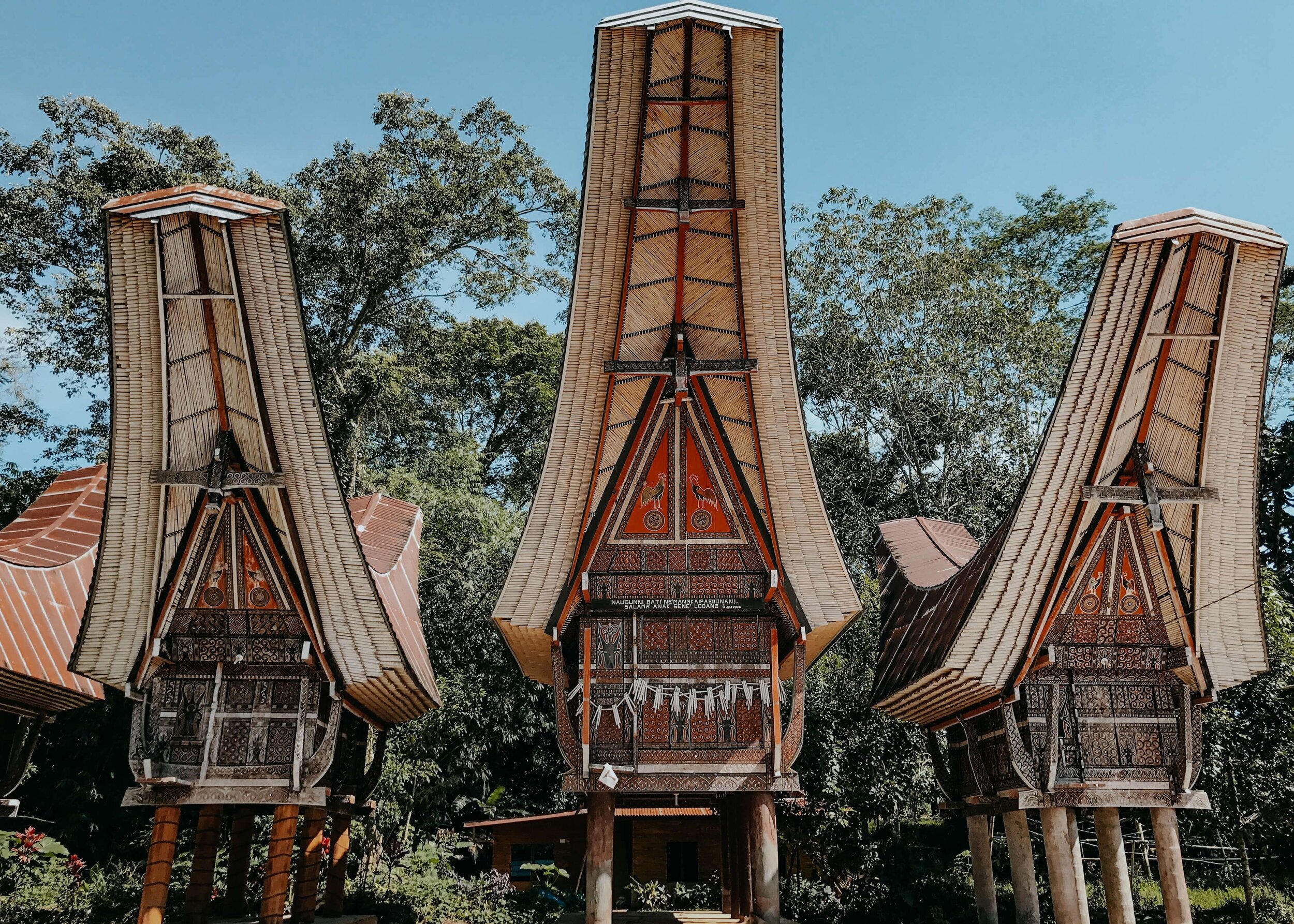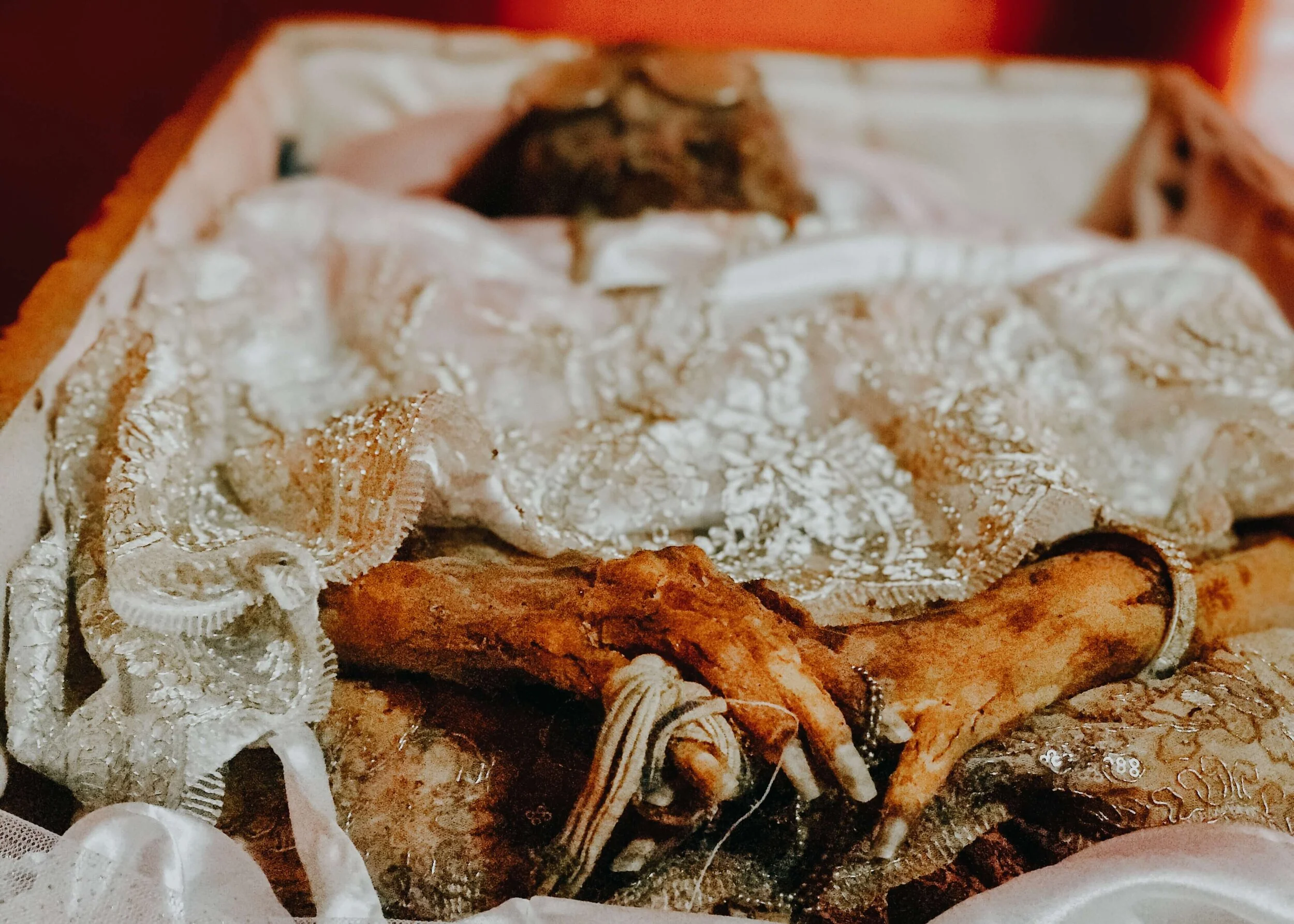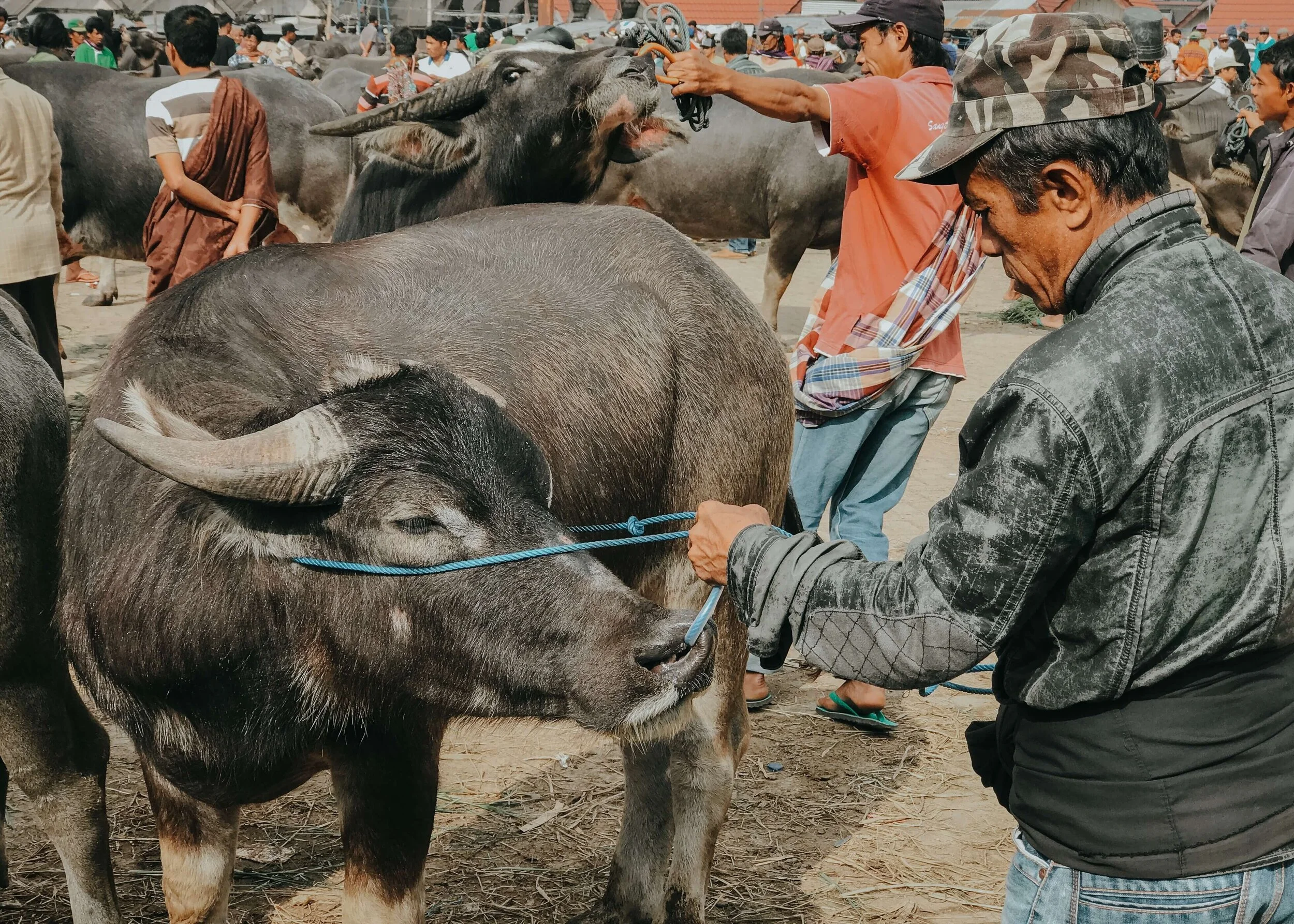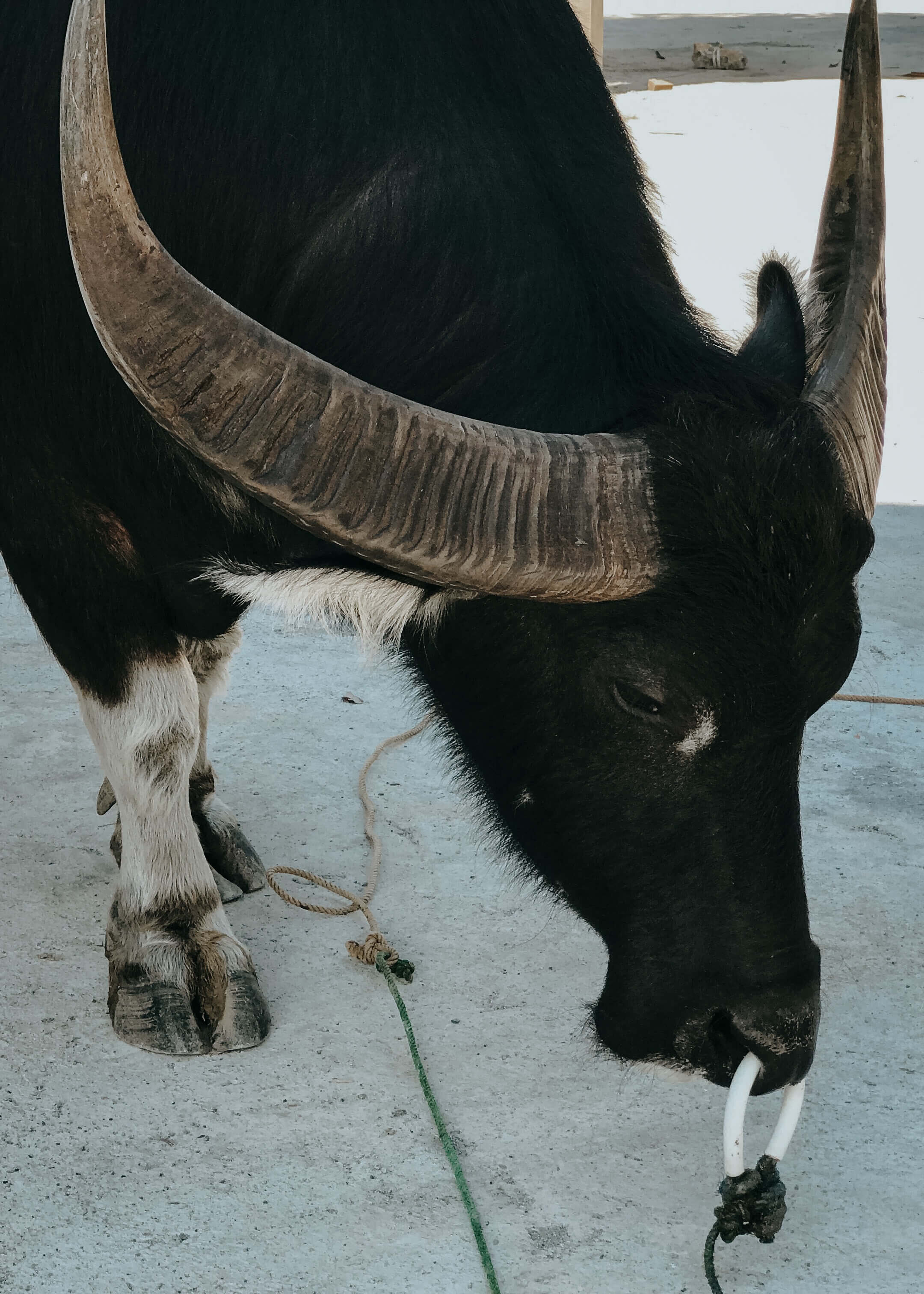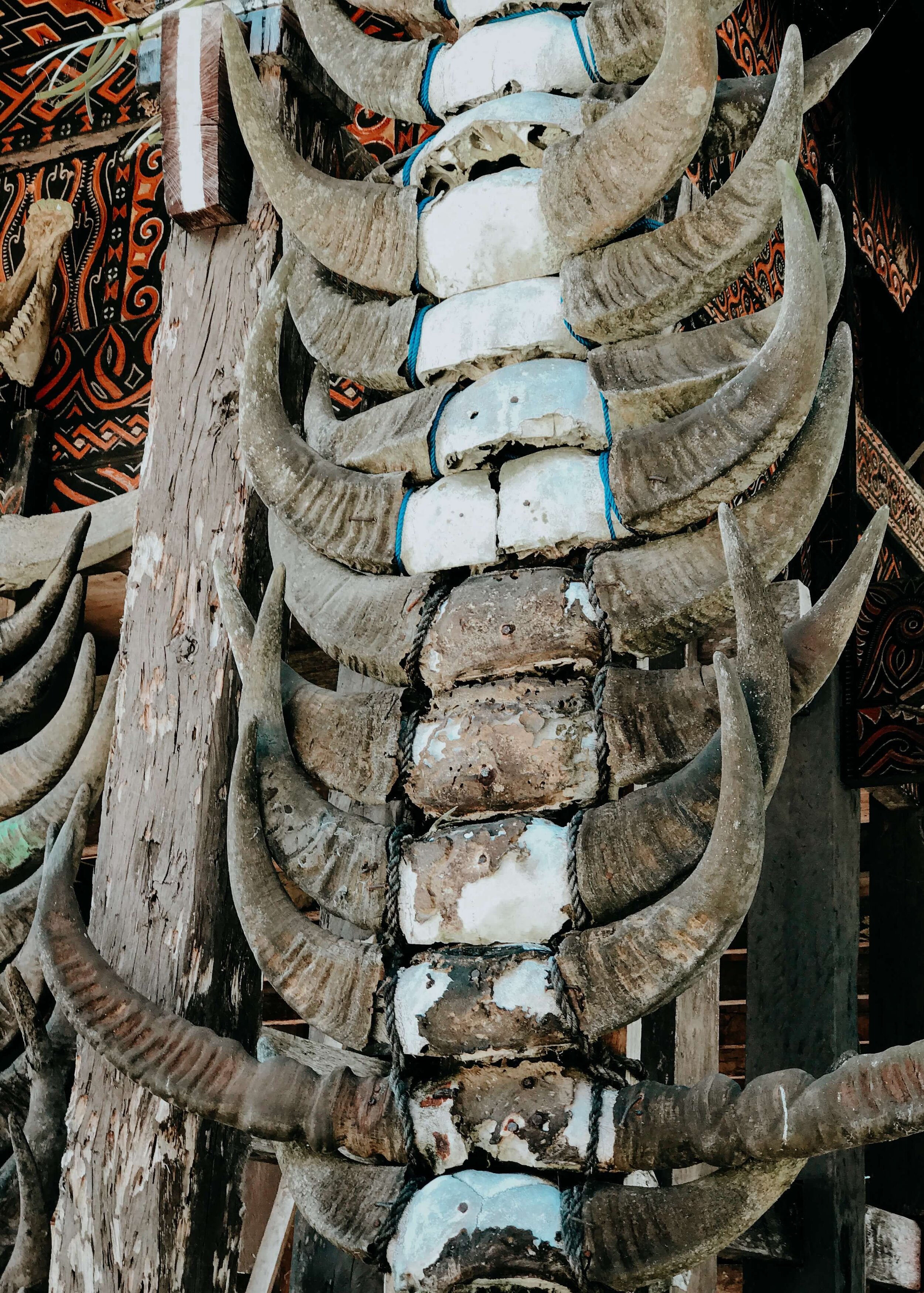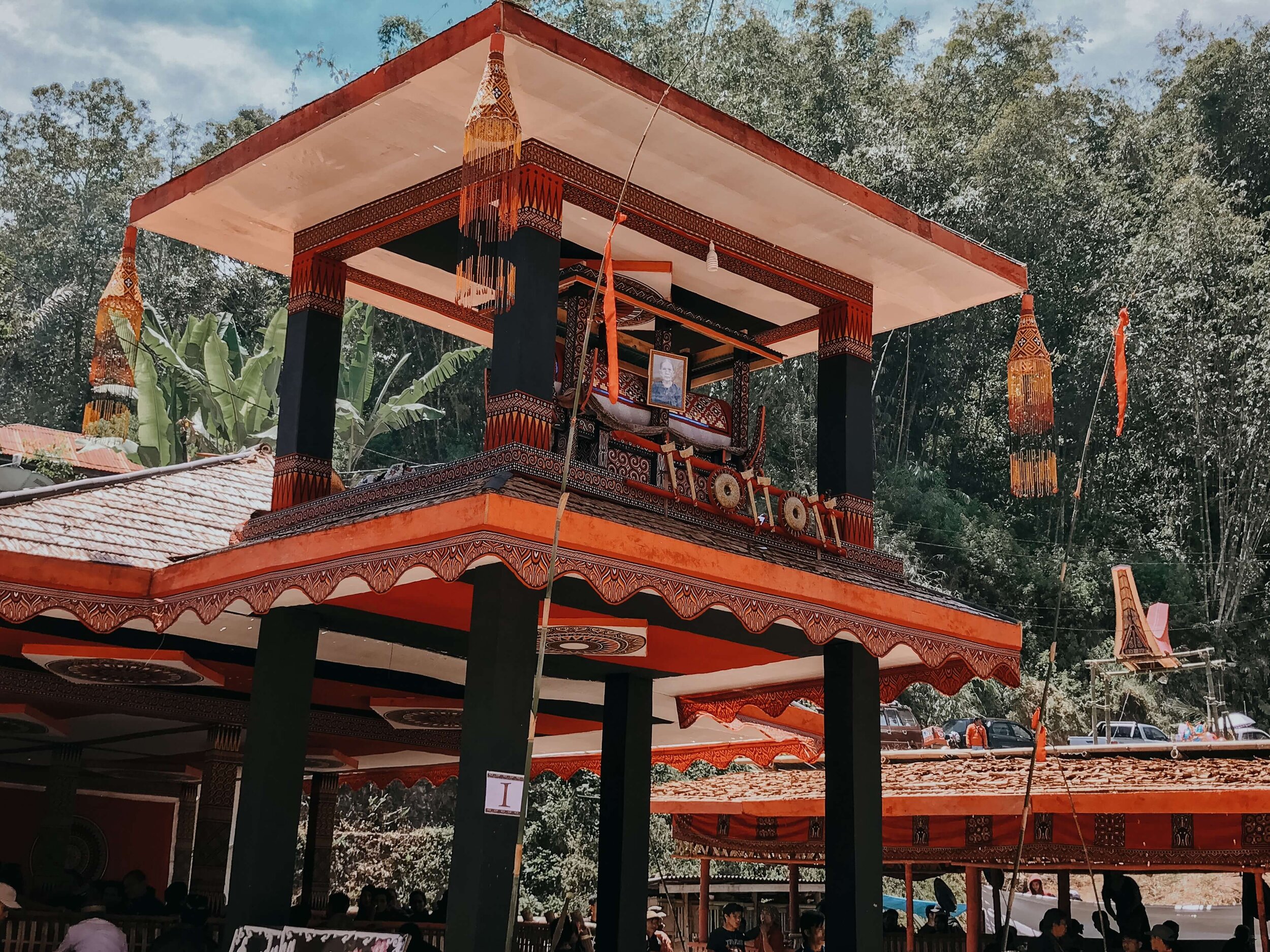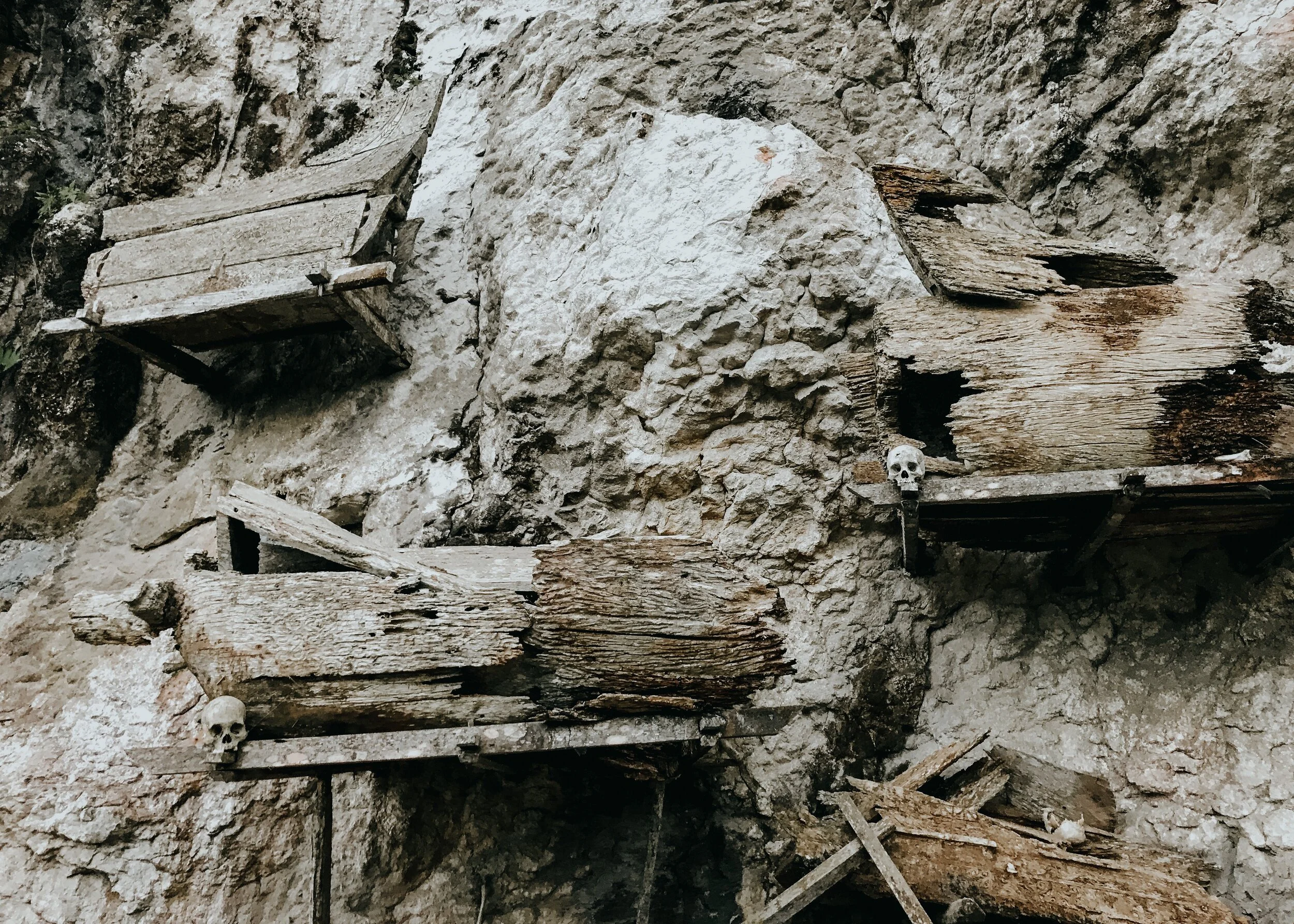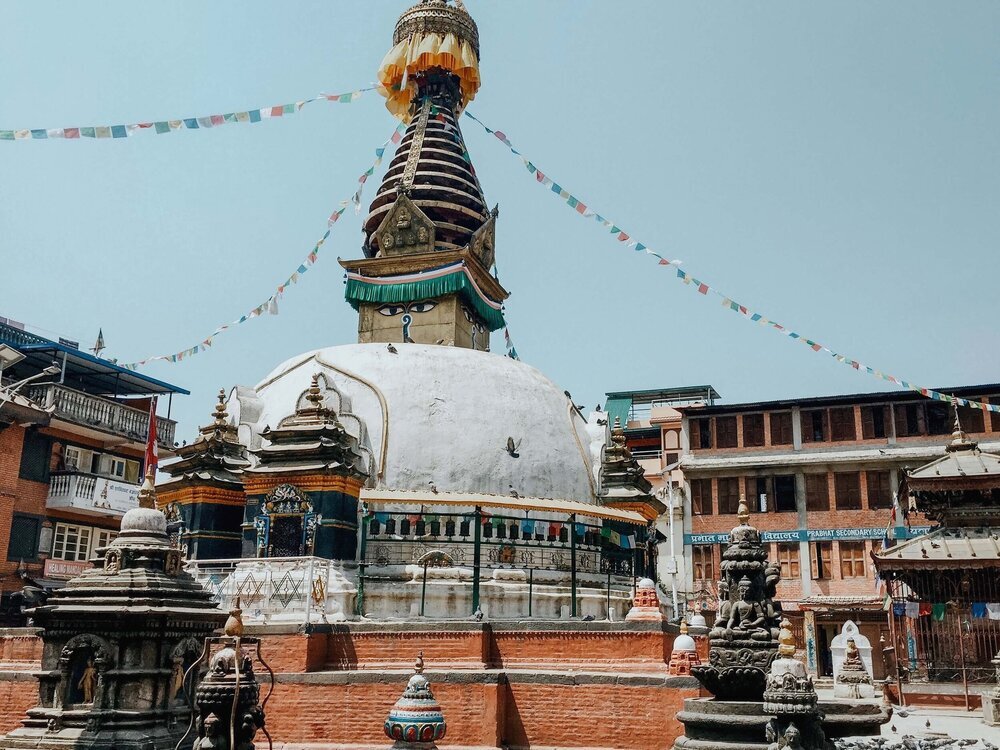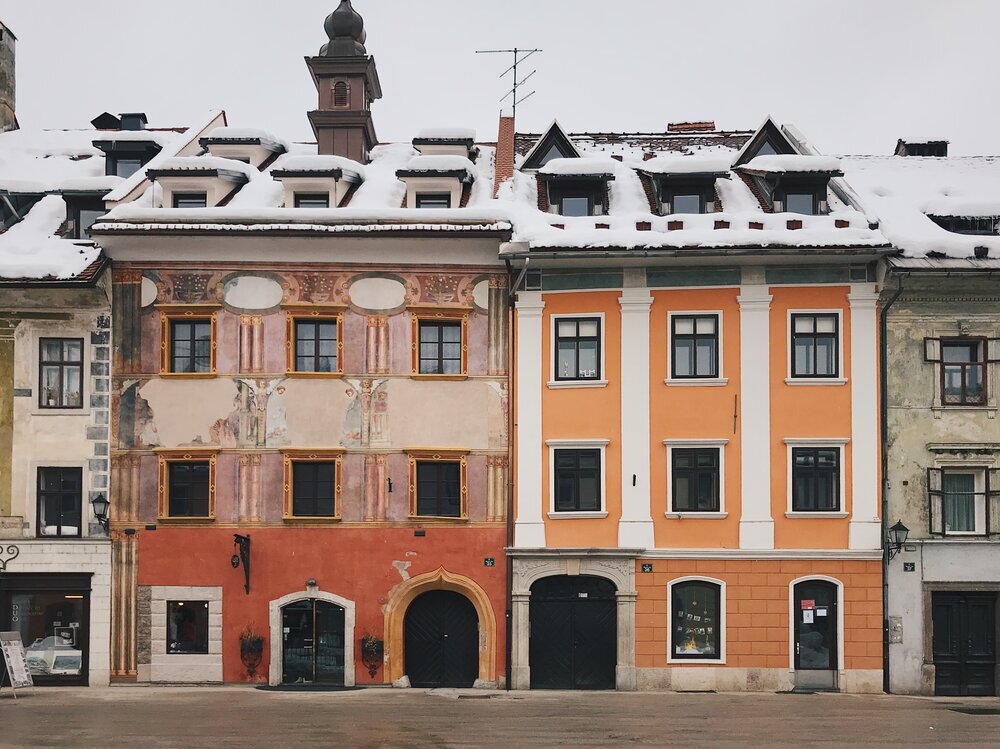The Living Dead: Understanding the Culture of Tana Toraja
Tana Toraja takes the cake (the whole bakery, really) as the most unique place i’ve visited. Beyond the luscious green rice terraces and windy roads, a fascinating culture around death unveils itself. Here, the locals live beside their dead loved ones - often for years - until their funeral.
Unlike more well-known locales that offer your typical travel fare of historical monuments, beaches and grand cities, Toraja is unknown territory. In this pocket of Indonesia, the visitor’s experience is far more complex and difficult to explain. Then again, not many people travel to see household mummies, slaughtered buffalo and attend elaborate funerals of strangers.
Few tourists make the trek to Toraja, and the ones that do are not there to see the pretty landscape. Nay, they take the road literally less traveled to witness the unique culture of death. These macabre culture-vultures (myself included) are eager to dig into what makes Toraja Toraja, no matter how strange it may get, and it invariably will. It’s Indonesia after all.
With this meaty post, I delve into the nitty-gritty details of Torajan culture and seek to explain the nuances of their traditions. Why do the mummies stay in the family home? Who decides how many buffalo a person needs to be allowed to the afterlife? How much does one cost? Why are the mummies fed?
Well my dear curious readers, buckle up because we’re going on quite a journey.
(Please Note: As to not take you unawares, I’d like to add that this post contains potentially disturbing images.)
Table of Contents
This slice of land is tucked into the contours of Sulawesi, the octopus-shaped island in central Indonesia. Toraja basically sits in the middle of an island that sits in the middle of Indonesia’s sprawl of islands.
Country | Indonesia
Island | Sulawesi
Region | Tana Toraja Regency
Population | ~450,000
Religion(s) | Christian, Muslim, Animist
Tana Toraja serves up your typical Indonesia fare: lush greenery, friendly and curious locals, markets a-plenty and rice paddies galore. However, unlike the bulk of the country, they do not identify as Muslims (which is practiced by a whopping 89% of Indonesians) and instead they opt for Animism. Well, technically they are Protestant, which was introduced by the Dutch once upon a time, because Animism is not a recognized religion by the Indonesian government. Religion is a whole other basket in Indo, but the key takeaway here is that they maintain their Animist roots.
In stark contrast to Western culture, which tends to avoid death as much as possible, Torajans see earthly life as a single step in a great journey. Rather than fear death, they actually look forward to it and see it as cause for celebration. And celebrate they do; elaborate five-day funerals are attended by the entire community and have the atmosphere of an upbeat music festival. Personally, I find their approach to death to contain a level of acceptance and grace that is so often lost in Western society.
Their view of death may be refreshing, even healthy some would argue, but it is not without its complexities. Their traditions lead to exorbitant funeral costs, even by Western standards, and often put families in deep debt. In fact, most Torajans spend their entire lifetime saving up for their funeral, and I’m not talking through 401k investments or stocks and bonds. Oh no, no. The wealth I’m talking about is buffalo. These beautiful and brazen creatures are their currency of choice (we’ll get into this later, don’t worry).
It’s important to note that a funeral cannot take place until all costs covered - and I mean ALL. If enough is not saved during life, it becomes the family’s responsibility to cover the rest, which is where it gets real interesting. Since acquiring money takes time, particularly when in the middle of an island in the middle of islands, the dead are cared for in the family home - after a healthy dousing of formaldehyde, of course - until the finances are in order.
So far, the main takeaways are: brazen buffalo, family mummies and ridiculously expensive funerals. Still with me? Good. If not, hopefully the glossary below will make it easier as we go.
Animism: A spiritual practice that believes that non-humans (animals, objects, etc.) have a spiritual essence
Buffalo: A sign of wealth; they are believed to safely carry the dead to the afterlife
Death: The point at which a person dies and is mummified soon after
Ma’Nene: When the dead are taken out of their grave and cared for (i.e. change of clothes); occurs every few years
Puya: The land of the afterlife
Rambu Solo: The elaborate funeral, often taking place months to years after death
Rantepao: Largest town in Toraja, home of Pasar Bolu
Tongkonan: Traditional structures shaped with curved saddle-like roofs; built for homes and funerals to represent the life cycle
Dying anywhere in the world is expensive, but in Toraja it is shockingly so. To put things in perspective, lets look at the numbers:
A bare-bones funeral (pun unintentional) is around $50,000 USD per person. For middle and upper class citizens, the final check is closer to $200,000 USD per person, going up to $500,000 USD. Now, keep in mind that the average yearly salary for a middle-class Indonesian is $12,000 USD, though the vast majority of the population live in rural communities where it is commonplace to earn closer to $2,000 USD a year.
In summary: for a $100,000 funeral, the average Torajan would need to save their entire yearly salary for 50 years.
As you can see, the cost of living and dying are vastly skewed. In an ever-increasing globalized world, with the internet at our fingertips and access to the ways of other cultures, many young Torajans are torn between maintaining their traditional culture and saving money to pay for life expenses, education and travel, rather than for their imminent death. And who can blame them?
Funeral costs quickly add up when hosting a five-day event with hundreds of attendees. Add in 18 buffalo here, 20 pigs for sacrifice there, food for hundreds of guests each day and 10-20 tongkonans, or huts, to be built for them (which will be burned after the funeral takes place I might add). Plus the cost of burial and caring for a mummy in the meantime.
Speaking of mummies, let’s dive into that bit, shall we?
While in Toraja, we stayed at a local AirBnb hosted by a young woman named Meyskye. During our stay, she had family waiting to be buried and offered to let us meet them, which we excitedly accepted. It was, perhaps unsurprisingly, a strange experience.
Upon our arrival, we were instructed to speak to the deceased normally, to say hello and thank them for meeting us. While we respectfully walked around the mummies (yes, plural) laying in their coffins, Meyske said it was okay to take pictures. Feeling slightly ashamed for wanting to but also fascinated by the entire scene, I quickly took a few and then put it away. She explained that the mummified woman, who was wearing a lovely white dress and pearls, had died a few years prior. The tuxedoed man beside her, her husband, passed only a few weeks ago, a timeline that matched their states of decomposition. (And no, they did not smell.)
In this corner of the world, it is important to understand that a “death” and a “funeral” are two very separate events. Once a person dies, they are embalmed and kept in the family home until their funeral, which can be years after their death. As mentioned before, funerals are very expensive and cannot take place until paid in full and all traditional aspects are taken care of.
In the case of Meyske’s family, the woman did not want to go to the afterlife without her husband and chose to wait for him. They also planned to share their funeral arrangements and buffalo, thereby cutting the costs in half, which, I have to admit, is a pretty smart strategy.
The time between a death and a funeral is considered to be a transition period. They don’t believe the deceased are “dead” but are rather “sick” and very slowly beginning their journey to the afterlife, or Puya. During this transition period, the mummies are gently taken care of as if they are alive; they are made four meals a day, their clothes are changed and visitors stop by to have conversations with them, such as we found ourselves doing.
The buffalo is the most sacred animal in Torajan society, and more than for their adorable faces, which is enough for me to worship them. In Toraja, they act as a measure of success by representing the family’s social status, wealth and ties to the land - the more buffalo, the better. Their most important role, however, is safely carrying the dead to Puya, the afterlife.
Getting to Puya is a long journey and getting lost along the way would be catastrophic. To avoid that mess, Torajans send along an escort of buffalo, whose spirits are released when sacrificed at the funeral. Unfortunately, one buffalo cannot guide the dead on its own, which is what tends to complicate matters and contribute to the high cost of funerals. A minimum of six buffalo must be sacrificed, though the more important the person was in life, the more buffalo needed to carry them to Puya. For example, a village chief needs 24 buffalo at minimum before a funeral can occur. Power and prestige are heavy loads, my friends.
If a person did not acquire enough buffalo while alive, their family must make up the difference. In this way, buffalo can be thought of like currency: they can be earned, bought, sold, traded, invested and banked. Sound simple? It’s not, I assure you.
F.A.Q.’s
1. How does one acquire a buffalo?
Option A: buy one at the market (see question #3)
Option B: receive through an I.O.U. (see question #5)
Option C: by performing an odd job, such as carving out stone graves
Bonus option that I’m not sure is actually allowed: breed your own buffalo?
2. how much do they cost?
They are $4,000 - $15,000 USD each, though you can find an inexpensive one for around $1,500 USD. Their value is based on several factors, from the length of their horns and hooves to the color of their fur and overall shape. Most are purchased at Pasar Bolu, the local market, where an exchange of haggling occurs after every inch of them is thoroughly inspected. Albino buffalo are especially prized.
3. What is done with them?
Buffalo are no small commodity and they are treated similarly to pets while alive; they are brushed, taken on walks and bathed with care. At an average of $6,000 USD each, they deserve to be treated like the treasures they are. When it is time to be sacrificed at a funeral, their throats are cut and their meat is distributed among the community, with the best parts going to the closest kin of the deceased. The immediate family is also given the head and horns, which are later hung on the front of their village’s tongkonan.
4. Who decides how many buffalo must be sacrificed?
In a “perfect” ceremony, a person has 24 buffalo of varying physical attributes which are sacrificed on the second day of the ceremony. While the number sacrificed for an important citizen can reach into the 30’s, for lower caste citizens “perfection” isn’t always the goal and meeting the six buffalo minimum is enough. Ultimately, the final number is decided by the local village chief and discussed among family of the deceased.
5. do Buffalo have to live as long as you!?
No, not necessarily - which is a good thing since their lifespan averages 25 years. You see, if someone has a spare buffalo on hand, they can bring it to the funeral of a community member as a gift, though it’s less of “gift” and more of an “I.O.U.”
Here’s the catch: the family of that community member is now beholden to bring a buffalo of equal or greater value to the gift giver’s funeral one day. It’s all carefully tracked and officially recorded; even those who moved away will come back for the funeral with a buffalo in tow if they owe one. What makes it complicated is that these debts are passed down from generation to generation, so you can get stuck owing for a great-grandmother you never knew.
So no, Toraja isn’t one massive buffalo farm (though it’s not not that). Most have one or two physical buffalo and they cash in on the remaining when their time comes.
For Torajans, a funeral is the event of the year, and what a party it is! An incredibly gory party, that is. Rambu Solo, the elaborate funeral ceremony, involves the whole community and runs on a strict schedule - a shocking feat for your average Indonesian. The body is brought on day one, animals are sacrificed on day two and guests are welcome on day three. Some funerals go for more than five days, with an array of sacrifices and dancing happening before the final day, which is when the deceased is carried to their final resting place.
The funeral is set up with all the newly built tongkonan placed in a U-shape, each labeled by letter with small sections arranged by number; seating is based on social hierarchy. The tongkonan all face the largest structure which towers over the rest at front and center. This is where the deceased preside over the events - it’s their funeral so naturally they get the best seat in the house. The middle is where the bulk of the festivities happen. It is where the dancing and singing occurs, as well as where the animals are sacrificed. All the while, a lively emcee announces what is going on and, when animals are sacrificed, who brought what and what they are worth, for official records, of course.
By perfect happenstance, there was a funeral occurring while we visited Sulawesi. Meyske, our host, excitedly shared this news the night prior to our attending and promised to lay out appropriate clothes for us to borrow. When we arrived the next morning, I almost thought we were making a pit stop at a party before heading to the funeral, though I quickly learned that the funeral was the party.
As we walked in, we passed bright carts selling Hello Kitty balloons and ice cold soda pop. We skipped the temptation to purchase animated balloons and beverages and conducted our first order of business: presenting our gift to the deceased. As two non-smoking vegetarians, we fit in like a square peg in a round hole as we passed by bloody animal carcasses to deliver our gift of cigarettes (bulk pack of 20, to be sure).
Next, we were led to the tongkonan labeled number five (not the best seat, not the worst). We were immediately fawned over by a gaggle of older women in all black robes and hijabs, eager as ever to say hello and feed us. As we chatted, cheery children ran about in their bright orange robes and colorful beads. All the while, pigs strapped to bamboo poles squealed incessantly in the heat. (This was easily the most difficult part for me.)
Not many Westerners frequent Sulawesi, let only Tana Toraja, and it is a great honor to have foreigners attend a funeral. The day we attended, we also saw two couples being led through the array of activity. As I watched them take in the scene wearing khaki shorts and colorful t-shirts, I made a mental note to graciously thank Meyske for our borrowed black robes.
On the final day of the funeral, a procession parades the deceased to their final resting place, which can be in one of three places: in a stone wall, on a cliffside or in a cave. No matter the method, they are always cleaned and well-prepared for the afterlife. Before being taken to their final resting place, loved ones will fill the coffin with money, cigarettes (many, many cigarettes), clothes, soda, candy and anything else to make the journey to Puya more pleasant.
But the fun doesn’t stop there.
Each August, the family will re-open the grave in a ceremony known as Me’nene. The deceased are cleaned, changed into new clothes and have their coffin tidied up. This is also a special time when younger Torajans are able to meet their ancestors. Stories are shared, selfies and updated family photos are taken and relatives may even share a cigarette with the dead. Before being returned, their grave is refilled with additional items, such as the dead’s glasses or favorite trinkets.
Burial Options
1. hollowed out Stone
With this method, a coffin is hoisted up and placed inside the hollowed out rock, which heavily deters form grave robberies. The higher up, the more important the individual.
2. cliff side ledge
Rather than being put inside the rock, a coffin is placed on a wooden platform attached to the cliffside. Seems impractical with the weather, but who am I to say?
3. in a cave
Some families have crypt-like caves, but because of their accessibility they are more susceptible to grave robberies. Due to this, many bones and skulls are found strewn outside of coffins.
4. in a tree
In unfortunate cases when an infant passes, they are wrapped in cloth and placed in a hollow tree trunk. While no longer common practice, it was believed that their spirit grew with the tree.
That's a Wrap!
Pun somewhat intended there, but honestly, I hope you enjoyed learning about the fascinating culture of Tana Toraja. Death rituals are deeply important to them and I was humbled by my spectacular experience staying with Mesyke. With unbridled enthusiasm, she taught us so much about Torajan tradition, from introducing us to her mummified family members to taking us to a stranger’s funeral, and all the morbid curiosities in between.

